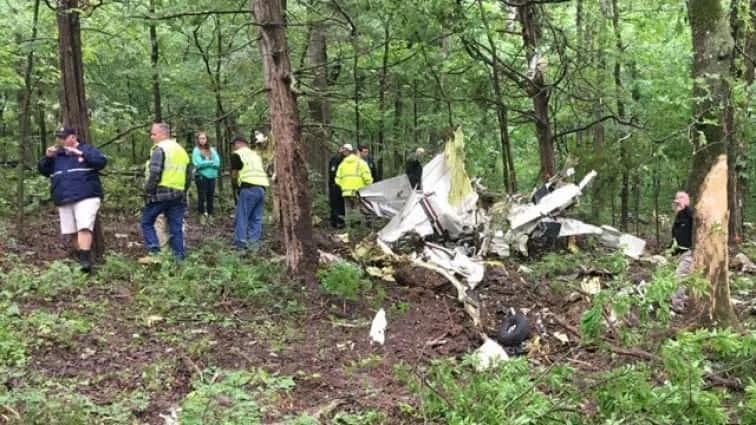
The National Transportation Safety Board said pilot disorientation and limited instrument training are the causes of the May 12, 2017 plane crash that killed Dominic and Dr. Dianne Giammetta in northern Christian County. (Christian County Sheriff's Office Photo)
Pilot disorientation and limited instrument training are listed as the probable cause of an airplane crash that killed two people in northern Christian County nearly two years ago.
The final report from the National Transportation Safety Board said 69-year-old Dominic Giammetta of Bettendorf, Iowa became disorientated in deteriorating weather conditions and that his overreliance on his limited instrument training likely caused the crash of his Beech A36TC aircraft into a wooded area on May 12, 2017.
Giammetta and his wife both died of blunt force trauma, according to the report, which added that a toxicology test found a small amount of antidepressant medication and an over the counter antihistamine in his system. While none of the medications are generally considered impairing, the report said it couldn’t be determined if the effects from the drugs contributed to the crash.
Giammetta was flying the plane from Davenport, Iowa to Muscle Shoals, Alabama when he began to descend near Madisonville due to light rain and overcast clouds. He contacted Fort Campbell Approach and requested somewhere to land. The controller provided Giammetta with Outlaw Field in Clarksville. The plane had descended to 3,500 feet when Giammetta said he wanted to get lower to see what kind of visibility he had. When the controller provided Giammetta with a proper course and altitude to avoid the weather, he said he intended to climb back to 3,500 feet.
At 11:49am, the Fort Campbell Approach controller said the airplane was maneuvering erratically and made a sharp left turn and headed north. The plane climbed to 2,100 feet and turned back on course. At 11:52, it dropped off the radar.
Witnesses in the Shurdan Creek area reported hearing a “high revving sound” with the impact occurring less than a minute later in a wooded area behind a residence.
NTSB investigators said Giammetta’s flight into the rainy weather conditions resulted in a loss of control due to spatial disorientation. The Federal Aviation Administration says this type of disorientation can make it difficult for the pilot to often tell which way is up.
The report said Giammetta had received about 71 hours of simulated instrument flight training and had accumulated about 16 hours in actual instrument conditions, though his most recent instrument training flight was more than a year before the accident.



